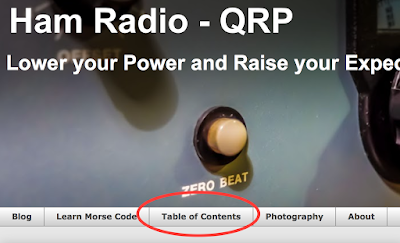Quieting a noisy power supply
With a bit of time over the Christmas break I'm finally getting around to work on things that have bugged me for a while... like my noisy power supply.
My TenTec Century 21 doesn't have a fan and it has a built-in power supply, so no fan noise. My Elecraft KX3 has no fan, so no fan noise and it can run all day from a small 12v battery. My TenTec Eagle only runs fans when the finals get hot and even then the fans are in the interior of the case and are speed controlled, low-speed, high-volume dudes that I have never heard. I can feel air moving through the Eagles vents so I know the fans work, their just silent. But the Eagle needs an external power supply.
My power supply has a single, large fan that makes me jump every time it whirs into action. Admittedly, my power supply was near the bottom of the range in the Astron lineup. I assume they have speed controlled fans, or at least quieter fans further up the product line. I purchased this one used, about 9 years ago, so who knows, maybe their new power supply's have speed controlled fans.
My TenTec Century 21 doesn't have a fan and it has a built-in power supply, so no fan noise. My Elecraft KX3 has no fan, so no fan noise and it can run all day from a small 12v battery. My TenTec Eagle only runs fans when the finals get hot and even then the fans are in the interior of the case and are speed controlled, low-speed, high-volume dudes that I have never heard. I can feel air moving through the Eagles vents so I know the fans work, their just silent. But the Eagle needs an external power supply.
The calming sound of CW wafting forth from the Eagle is soon destroyed by a sound not unlike an air-raid siren emitted from my Astron power supply as it kicks its fan into high gear
Problem
Anyway, on my model, the muffin fan produces a hurricane force blow switched by a thermocouple located on the transistor heat sink (right hand side). It is a very simple design... when the thermocouple trips it closes a circuit to the fan. When heat sink temperature falls below the threshold it cuts off. So the fan is either ON or OFF. Normally the fan doesn't come on when the rig is idling, and it will only come on once in a while at QRP levels. I just never know when, but I'm always anticipating... like the jerk kid that would flick your ear when he walked by back in school (hmm, I feel as though I may have some un-dealt with issues from childhood).
The fan seems to have a knack for coming on when I'm working a station that is fading into the noise and remaining on until I've missed some key piece of the QSO.
Solution
The label on the fan says it's 1.4w 12v... I rummaged through my junk box looking for 2w and higher resistors. I didn't find a lot to choose from, since I just haven't been at this electronics building stuff all that long. I had a number of very low resistance ones from 2 ohm to 20 ohm and everything else was 650 ohm or higher.
I clipped test leads to both sides of the thermocouple on the heat sink that controls the fan. I wanted to try different resistor values to see what happened. Predictably, the low value resistors acted pretty much like a closed circuit and the fan ran near full speed. I could have strung a number of the low value resistors in series but that seemed messy and the values were mostly very low. I tried my next lowest value 2-watt resistor, 650 ohm. The fan didn't even come on with 650 ohm resistance. I didn't have anything in between so I put two of the 650's in parallel and it turned verrrry slooowwwly.
You can find TOTAL RESISTANCE in a Parallel circuit with the following formula: 1/Rt = 1/R1 + 1/R2 + 1/R3 + ... "
Ok I was on to something. Turned out that 5 of the 650 ohm 2w resistors in parallel did the trick... That turned out to be near 130 ohm. I left them hooked up for an hour or so to make sure more current wasn't being pulled than I expected, and they only became slightly warm to the touch so I figured my redneck engineering was good to go. I soldered the bundle of resistors leads in parallel and used some heat shrink to keep it neat.
I've used the power supply for a good part of a day and it stays nice and quiet now. Not silent, but good enough to where I can't hear it at all with my headphones on. A key down test into a dummy load at QRO power repeated times confirmed that the fan will go to full speed after a while but in normal operation, the thermocouple never triggers.
By my low standards, I deem this a success.
 |
| redneck ham engineering |
Perform this mod at your own risk
This is certainly not a manufacturer approved modification and your power supply may be quite different than mine so tinker at your own risk. Oh, and be careful when you have the cover off a power supply there are multiple, high voltage components in there. Make sure it's unplugged and has plenty of time to bleed off power from the big capacitors before you start messing with anything in there.
That's all for now
So lower your fan speed and raise your quality of life...
72/73
Richard AA4OO











